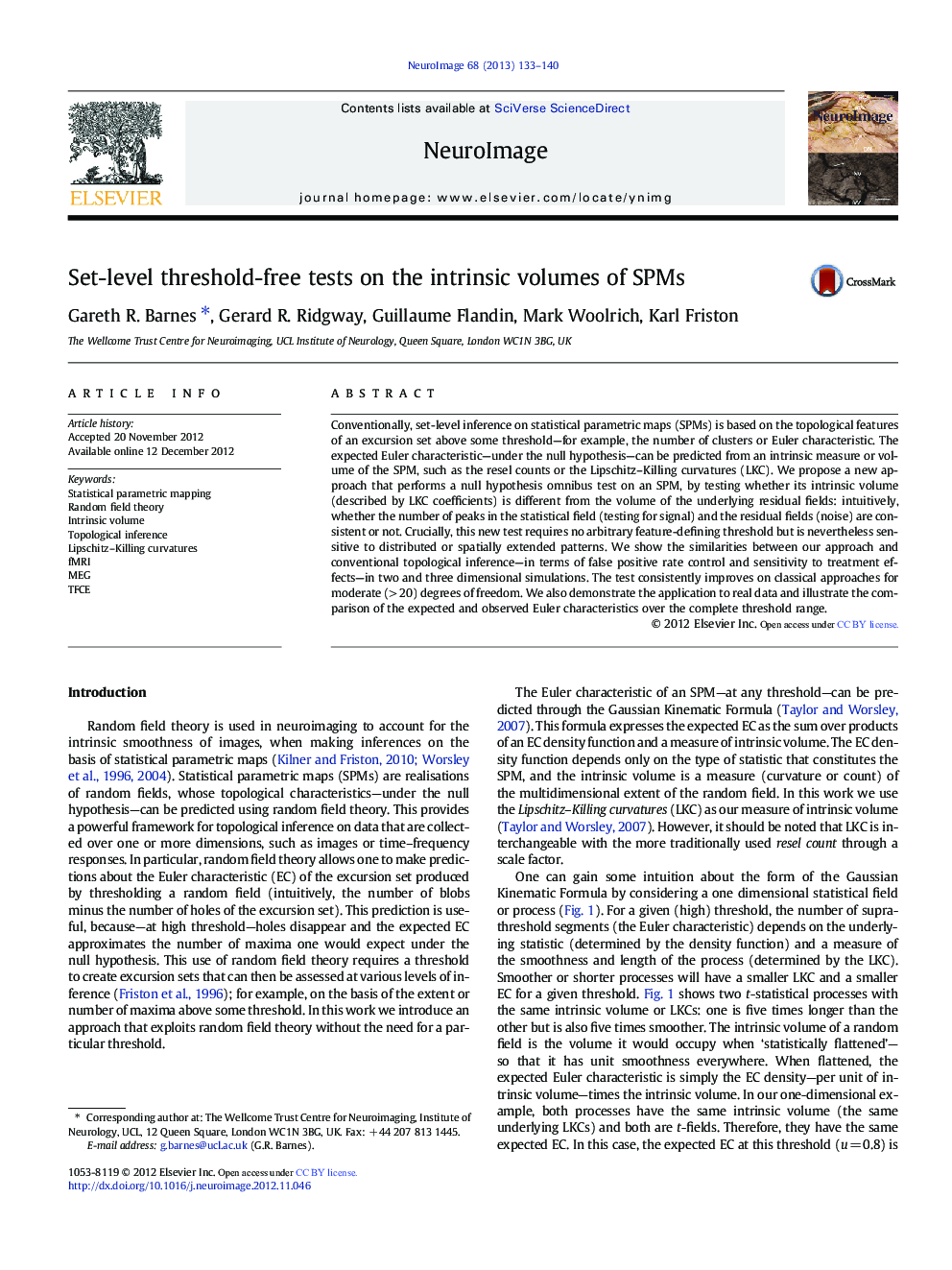| Article ID | Journal | Published Year | Pages | File Type |
|---|---|---|---|---|
| 6030197 | NeuroImage | 2013 | 8 Pages |
Conventionally, set-level inference on statistical parametric maps (SPMs) is based on the topological features of an excursion set above some threshold-for example, the number of clusters or Euler characteristic. The expected Euler characteristic-under the null hypothesis-can be predicted from an intrinsic measure or volume of the SPM, such as the resel counts or the Lipschitz-Killing curvatures (LKC). We propose a new approach that performs a null hypothesis omnibus test on an SPM, by testing whether its intrinsic volume (described by LKC coefficients) is different from the volume of the underlying residual fields: intuitively, whether the number of peaks in the statistical field (testing for signal) and the residual fields (noise) are consistent or not. Crucially, this new test requires no arbitrary feature-defining threshold but is nevertheless sensitive to distributed or spatially extended patterns. We show the similarities between our approach and conventional topological inference-in terms of false positive rate control and sensitivity to treatment effects-in two and three dimensional simulations. The test consistently improves on classical approaches for moderate (>Â 20) degrees of freedom. We also demonstrate the application to real data and illustrate the comparison of the expected and observed Euler characteristics over the complete threshold range.
⺠We calculate SPM intrinsic volume through the Euler Characteristic over thresholds. ⺠We compare these volume estimates to those obtained using classical methods. ⺠A multivariate test on these volume estimates gives a threshold free test of the null.
